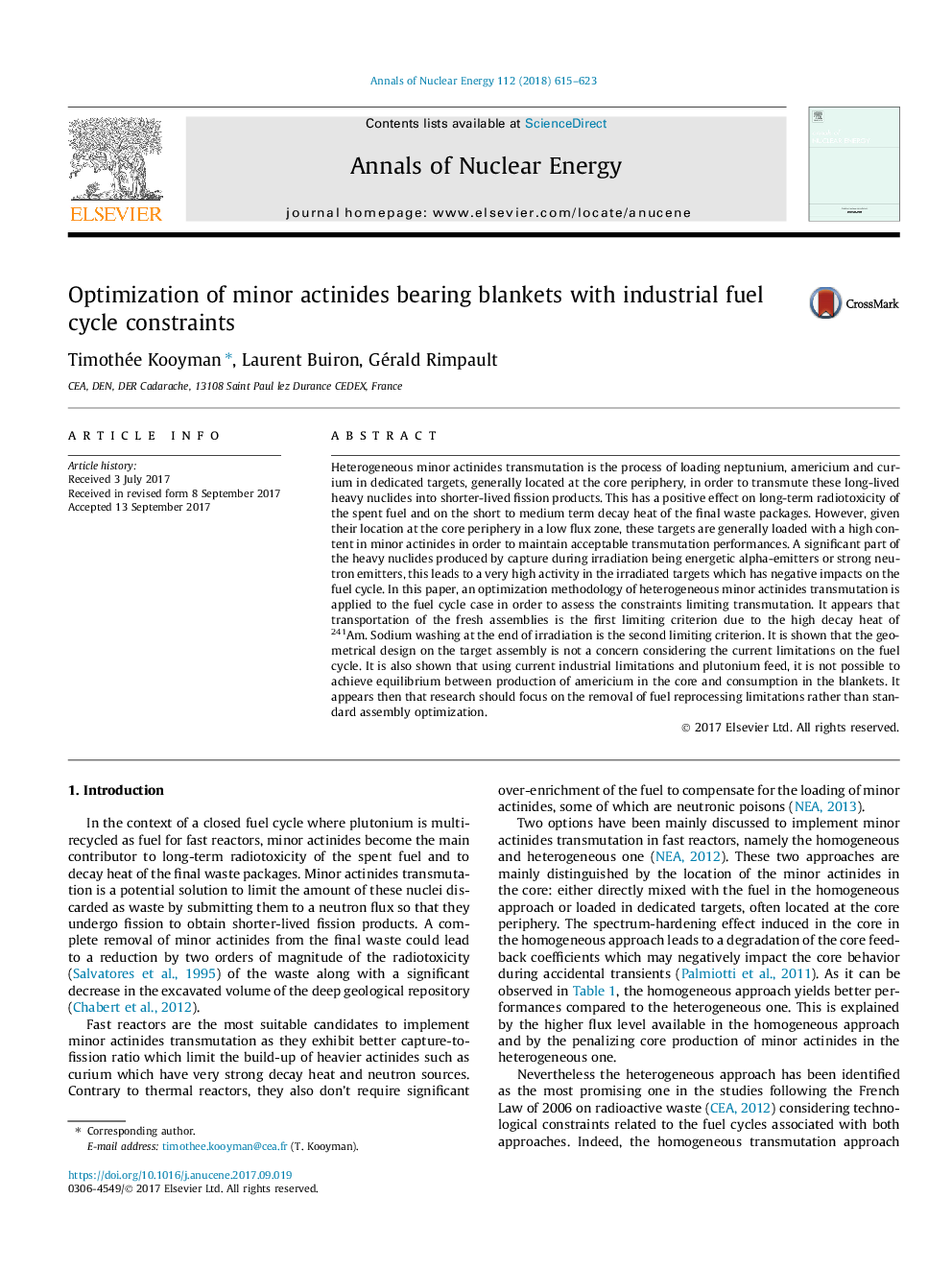| Article ID | Journal | Published Year | Pages | File Type |
|---|---|---|---|---|
| 8067276 | Annals of Nuclear Energy | 2018 | 9 Pages |
Abstract
Heterogeneous minor actinides transmutation is the process of loading neptunium, americium and curium in dedicated targets, generally located at the core periphery, in order to transmute these long-lived heavy nuclides into shorter-lived fission products. This has a positive effect on long-term radiotoxicity of the spent fuel and on the short to medium term decay heat of the final waste packages. However, given their location at the core periphery in a low flux zone, these targets are generally loaded with a high content in minor actinides in order to maintain acceptable transmutation performances. A significant part of the heavy nuclides produced by capture during irradiation being energetic alpha-emitters or strong neutron emitters, this leads to a very high activity in the irradiated targets which has negative impacts on the fuel cycle. In this paper, an optimization methodology of heterogeneous minor actinides transmutation is applied to the fuel cycle case in order to assess the constraints limiting transmutation. It appears that transportation of the fresh assemblies is the first limiting criterion due to the high decay heat of 241Am. Sodium washing at the end of irradiation is the second limiting criterion. It is shown that the geometrical design on the target assembly is not a concern considering the current limitations on the fuel cycle. It is also shown that using current industrial limitations and plutonium feed, it is not possible to achieve equilibrium between production of americium in the core and consumption in the blankets. It appears then that research should focus on the removal of fuel reprocessing limitations rather than standard assembly optimization.
Related Topics
Physical Sciences and Engineering
Energy
Energy Engineering and Power Technology
Authors
Timothée Kooyman, Laurent Buiron, Gérald Rimpault,
